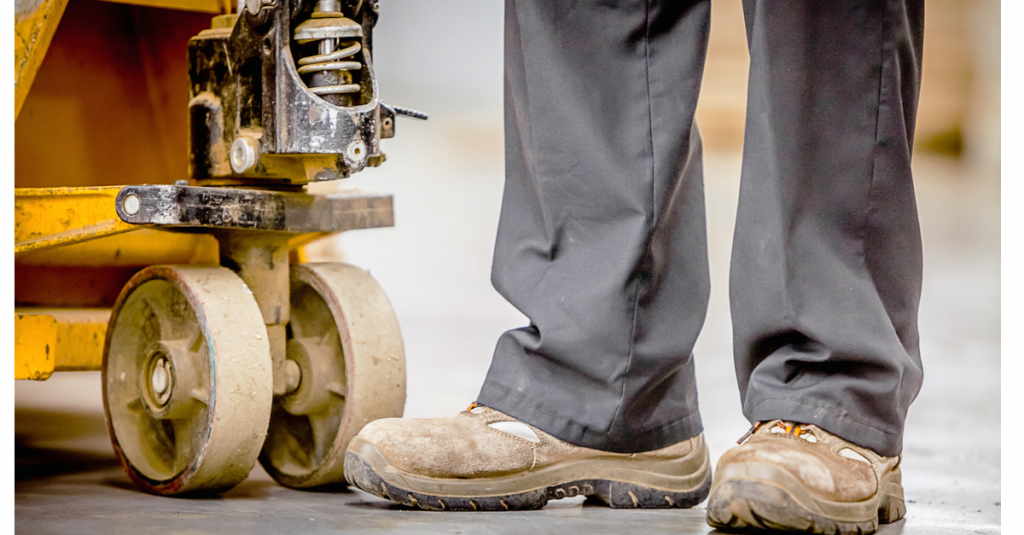Aucun produit dans le chariot
Ultimate Guide to Non-Slip Shoes

Keeping your workers safe on the job is critical. Making sure they wear non-slip shoes that reduce the risk of their slipping on the job is part of the solution. However, not all slip-resistant work shoes are the same. So how do you know if what your workers are wearing is slip resistant enough?
First things first: What are “Slip Resistant shoes”?
It’s defined as the amount of resistance the sole of the shoe exerts while moving over the walking surface. Slip resistance can be measured. And the measurement is called Coefficient of Friction (or COF). COF is the ratio between the maximum frictional force that the sole of the shoe exerts and the force pushing the sole across the surface.
So really it comes down to the traction and grip of the sole of the shoes and the floor itself -simple enough! Not quite – read on.
How Is Slip Resistance Measured?
Slip resistance is measured on a scale. The scale runs from 0.00 up to 1.00.
0.00 is equivalent to a skating rink, while 1.00 is equivalent to a dry carpet. The higher the number, the greater the slip resistance.
So rather than ask whether or not a pair of shoes is slip resistant, you could ask: How slip resistant are a pair of safety shoes.
Do slip resistance standards exist?
Unfortunately, there are no national standards for slip resistant footwear in the workplace. Unlike CSA safety standards for toe and plate protection, slip resistance comes in a wide range of performance levels and different brands use different test methods to determine slip resistance. In other words, not all safety footwear provides the SAME level of slip resistance or is measured consistently in the same way.
The most common testing process is done on a variety of walking surfaces, typically including dry quarry tile, wet quarry tiles and stainless steel. This is done in order to replicate standard work surfaces. And the footwear that is tested will be provided with COF testing results that look something like this.
| Co-Efficient of Friction | Flat | Heel |
| Dry Quarry | 0.73 | 0.54 |
| Wet Quarry | 0.47 | 0.39 |
| Wet Stainless Steel | 0.55 | 0.52 |
A variety of factors will affect the slip resistant performance of a shoe including tread pattern, contact between outsole surface and flooring, and the materials from which the outsole is made. When choosing a pair of slip resistant safety shoes or work boots, it’s important for you and your workers to find out how that shoe or boot is going to perform in your specific work environment.
Without real slip resistant testing standards in Canada, using COF measurements to evaluate footwear can be helpful in decision making but can’t be relied on especially when comparing various brands and styles. Our experts can help you navigate through the options to find safety footwear that provides the best slip resistance for your workers and workplace.
At Mister Safety Shoes, we are committed to helping workers get the best fitting, most comfortable safety shoes and work boots, so they remain productive and protected. We provide an end-to-end safety footwear management program for all sizes of businesses in Ontario and Alberta. Please contact our business solutions team if you are looking for a safety footwear program for your company.
